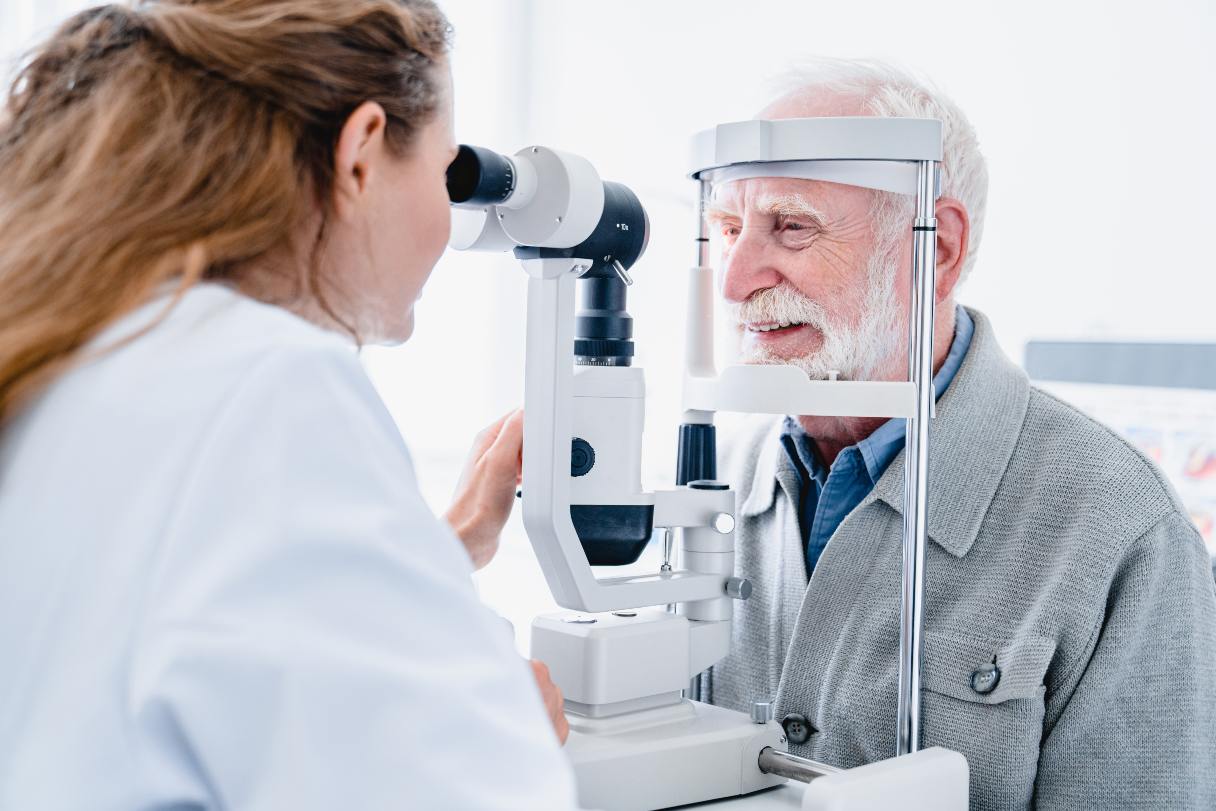If you notice red spots in your eyes, you may be one of many people who suffer from a subconjunctival hemorrhage. The good news is that this type of hemorrhage typically looks more alarming than it actually is. And while you may still want to see an eye doctor to rule out anything more serious, most cases heal on their own.1
What Is a Subconjunctival Hemorrhage?
A subconjunctival hemorrhage occurs when small blood vessels in your eyes break, leaking blood between your eye's sclera and conjunctiva. It can appear startling when you first notice it and will usually look like a red, bloody spot on the white of your eye.1
The sclera is a tough white fiber layer that covers your eye.2 The conjunctiva is a clear membrane that covers the white part of your eye.3 The conjunctiva helps protect your eye from microorganisms and foreign objects.2
Infant subconjunctival hemorrhage
Sometimes babies are born with a subconjunctival hemorrhage. In fact, this is a fairly common and typically mild birth injury that happens because of the pressure on a newborn's body during childbirth. It usually clears up in a few days.4
Common Symptoms of a Subconjunctival Hemorrhage
Often, the only symptom you'll notice from a subconjunctival hemorrhage is a red spot on the white of your eye when you look in the mirror.1 It typically starts small and may grow to cover a larger part of your eye.3 Over time, as it heals, you might also see a yellow tint where the blood was.3
There usually aren't any other physical symptoms. In some cases, however, you might feel mild eye irritation.1
It can be helpful to know the difference between a subconjunctival hemorrhage and conjunctivitis (or pink eye), which also affects the conjunctiva. Pink eye typically is more painful, with your eye becoming red and swollen and producing a sticky discharge. It's very contagious and might impact both your eyes. Your eye may have a burning, gritty or itchy sensation with pink eye.5
Subconjunctival Hemorrhage Causes
A wide variety of scenarios can cause a subconjunctival hemorrhage. Many cases begin with something causing a strain or increased pressure in your head.3 Possible causes include:1
-
Contact lens issues causing dryness or friction6
-
Coughing or sneezing (which might quickly and briefly raise the blood pressure in your veins)
-
Diabetes
-
Eye surgeries6
-
Straining from lifting a heavy object3
-
Rubbing your eyes too hard
-
Taking blood thinners or aspirin
-
Vomiting3
-
A blood clotting disorder (rare)
Diagnosing a Subconjunctival Hemorrhage
Your doctor may diagnose a subconjunctival hemorrhage just by looking at your eye. If the injury was caused by trauma of some sort, your eye doctor might also perform a comprehensive eye exam to look for any signs of additional damage.7
If the hemorrhage happens multiple times, your doctor might run blood tests and a more thorough eye exam to look for an underlying medical condition.3 High blood pressure or diabetes, for example, can weaken blood vessels and make them more likely to rupture.6 Some diseases may initially present as a subconjunctival hemorrhage, such as Steven-Johnson syndrome, Kaposi's sarcoma and others.6
Subconjunctival Hemorrhage Treatments
Most of the time, a subconjunctival hemorrhage will heal on its own, and you don't need any treatment. It can take days or weeks to go away, depending on the size of the blood spot.1
If you do want some symptom relief, you may only need to take mild measures:8
-
Use a cold compress to reduce swelling. Apply it for 10 to 15 minutes at a time, a few times a day.
-
Some doctors may suggest using a cold compress on the first day and then a warm compress after that. Your doctor can recommend exactly what you need.9
-
Don't rub your eyes.
-
Avoid strenuous activities like exercise or heavy lifting that might worsen the bleeding until your eye has healed.
-
Use eye drops (specifically, the artificial tears kind) to help with any eye irritation you might feel.
-
Avoid aspirin as a pain reliever, since it can increase bleeding.10
If you decide to just let the condition resolve at home, keep an eye out for new symptoms. You should see a provider if you notice eye discharge, swelling or redness around the eye, a fever, blood over your pupil, vision changes or pain.10
In rare cases of a severely damaged blood vessel, you might need surgery to repair it.8
Preventing a Subconjunctival Hemorrhage
There's no surefire way to prevent this type of eye hemorrhage, but you can take some actions to avoid it:8
-
A vitamin C deficiency might make it tougher for your blood to clot, leaving you vulnerable. Your doctor can recommend which supplements and vitamins are best for you.11
-
Follow your doctor's advice for treating high blood pressure if you have it.
-
If lifting heavy objects, take breaks every 20 to 30 minutes.
-
Wash your hands so you don't accidentally introduce an infection to your eyes.
-
Wear safety goggles when performing any activities that might injure your eyes.
A subconjunctival hemorrhage is usually not nearly as bad as it looks and will often go away on its own in a few weeks. But if you experience new symptoms or have multiple recurrences, you should see your eye doctor to rule out other complications.
Frequently Asked Questions About Subconjunctival Hemorrhages
Have more questions about this eye condition? Here are answers to some commonly asked questions.
CareCredit Credit Card Financing for Subconjunctival Hemorrhage
Whether you’re paying for eye surgery or getting an eye exam, the CareCredit credit card can help you pay for care where your insurance leaves off.* Use our Acceptance Locator to find a vision specialist near you that accepts CareCredit. Continue your wellness journey by downloading the CareCredit Mobile App to manage your account, find a provider on the go and easily access the Well U blog for more great articles, podcasts and videos.
In addition to vision care, you can also use your CareCredit credit card for dentistry, cosmetic, pet care, hearing, health systems, dermatology, pharmacy purchases, spa treatments and so much more within the CareCredit network. How will you invest in your health and wellness next?
Author Bio
Stephanie Dwilson specializes in science journalism, breaking news and animal health and is a business owner, non-practicing attorney and writer.







